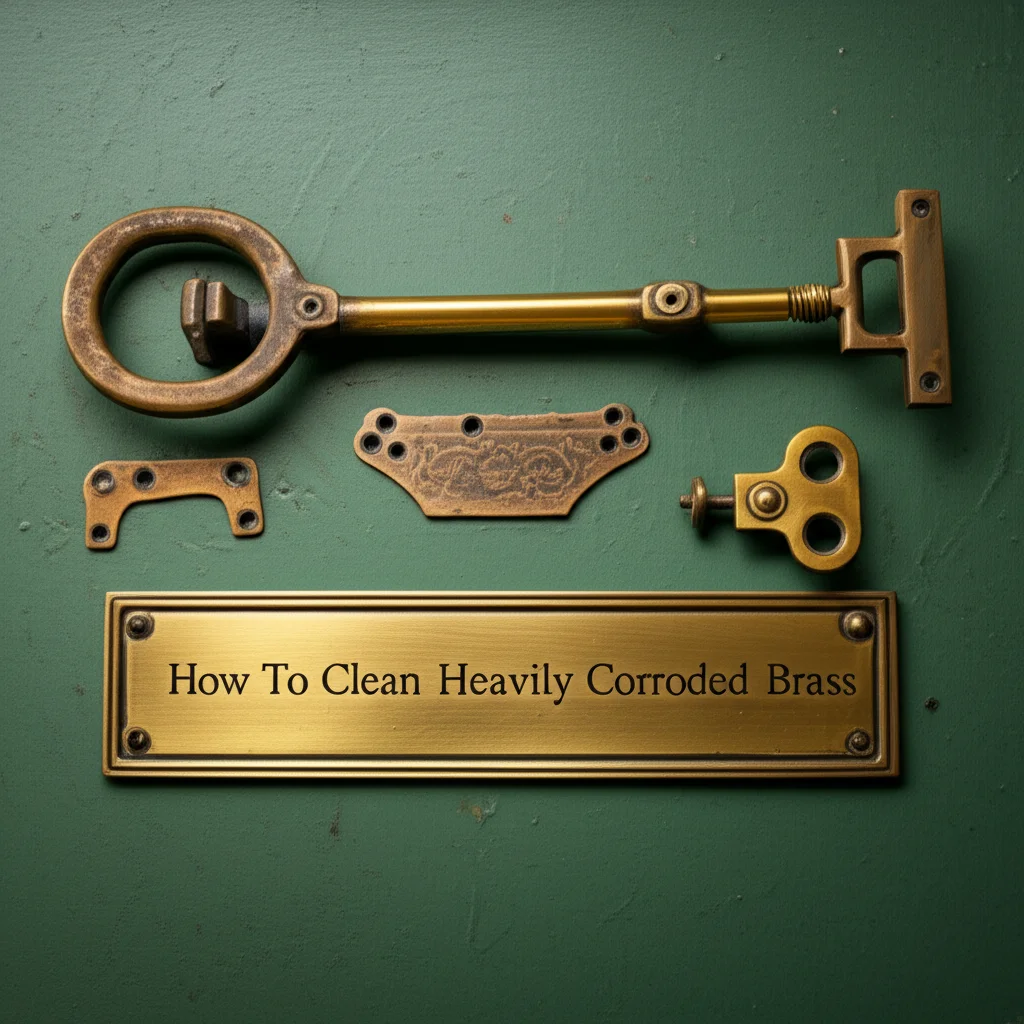· Todd Martin · Home Care · 15 min read
How To Deep Clean Pillows

How To Deep Clean Pillows: A Comprehensive Guide
Imagine resting your head on a pillow that feels truly clean. Many people overlook pillow hygiene. Pillows gather dead skin, body oils, dust mites, and allergens over time. This buildup impacts your health and sleep quality. Learning how to deep clean pillows changes your sleep. I will show you simple steps to refresh your pillows. This guide covers various pillow types and cleaning methods.
Takeaway
Deep cleaning pillows helps remove allergens, odors, and dirt. This improves your sleep environment.
- Always check the care label on your pillow before washing.
- Different pillow types (synthetic, down, memory foam) need specific cleaning methods.
- Proper drying is crucial to prevent mold and mildew.
- Regular maintenance extends your pillow’s life and freshness.
Quick Answer
To deep clean pillows, first check their care labels to confirm washability. Most synthetic and down pillows are machine washable on a gentle cycle with mild detergent. Memory foam and some specialty pillows require spot cleaning or hand washing. Always dry pillows thoroughly on low heat or air dry to prevent mildew.
Why Deep Clean Your Pillows? Boost Sleep & Health
Pillows are not just soft places for your head. They are a breeding ground for things you cannot see. Each night, your body sheds skin cells and oils. These collect on your pillow. Over time, dust mites, allergens, and bacteria make a home there. This buildup affects your health. It can trigger allergies, cause skin problems, and even impact breathing during sleep.
A dirty pillow holds odors. It can feel lumpy or lose its support. Deep cleaning removes these unseen guests. It eliminates unpleasant smells. It restores your pillow’s fluff and support. This means a cleaner, healthier sleep space for you. A clean pillow also lasts longer. It gives you good value for your investment. Taking time to deep clean pillows is an act of self-care. It helps you sleep better and breathe easier.
I found that ignoring my pillows made my morning allergies worse. Once I started deep cleaning them, my symptoms lessened. This simple act made a big difference. It brings peace of mind knowing my sleeping area is truly clean. Your pillow is close to your face for hours each night. Keeping it clean helps you avoid skin breakouts. It also stops respiratory irritation. A deep clean gets rid of those hidden issues. It leaves your pillow smelling fresh. It makes it feel new again. This effort brings many benefits. It makes your bedroom a healthier place.
Identify Your Pillow Type Before Deep Cleaning
Before you start any deep cleaning process, you must know your pillow’s type. Different materials react differently to water and cleaning agents. Using the wrong method can damage your pillow. It can even ruin it completely. Always check the care label first. This label gives specific washing instructions from the manufacturer. It is your best guide.
Common pillow types include:
- Synthetic Pillows: These often contain polyester or other synthetic fibers. They are typically durable and machine washable. They dry quickly.
- Down and Feather Pillows: These are soft and luxurious. They require gentle washing. High heat can damage the feathers.
- Memory Foam and Latex Pillows: These materials are dense and cannot be submerged in water. Machine washing will break down their structure. They require spot cleaning.
- Buckwheat, Millet, and Other Natural Fillings: These are usually not washable. You typically empty the filling and wash the cover.
If your pillow lacks a care label, try to identify the filling. Synthetic pillows feel light and airy. Down and feather pillows feel soft and scrunchy. Memory foam is dense and slow to return to its shape. Latex feels springy and firm. Knowing this helps you choose the right cleaning method. It prevents damage. It makes your cleaning effort successful. For more general advice on how to clean your pillows, you can find detailed information. Always be cautious. A small test spot is always a good idea. This ensures the cleaning solution does not harm the fabric.
Essential Supplies for Deep Cleaning Pillows
Gathering your supplies before you begin makes the deep cleaning process smooth. You do not want to stop in the middle to find something. Having everything ready saves time and effort. The specific items you need depend on your pillow type. However, some items are useful for most deep cleaning tasks.
Here is a list of essential supplies:
- Mild Liquid Detergent: Choose a gentle, bleach-free detergent. Too much soap can leave residue. This residue can attract dirt or irritate skin.
- Baking Soda: This is excellent for deodorizing. It helps lift stains. It is a natural cleaner. Many people use it to refresh surfaces. You can learn more about how to clean various items, including pillows, with how to clean pillows with baking soda.
- White Vinegar: Another natural deodorizer and disinfectant. It also helps break down mineral deposits. It helps brighten fabrics.
- Stain Remover: Use a mild, oxygen-based stain remover for specific spots. Test it on an unseen area first.
- Large Washing Machine (if machine washing): A large capacity washer allows pillows to move freely. This ensures a thorough clean. Agitator-free machines are best for delicate pillows.
- Large Dryer or Outdoor Drying Rack: Proper drying is key. You need space and air circulation.
- Clean Tennis Balls (optional, for dryer): These help fluff pillows in the dryer. They also speed up drying time. Put them in clean socks to prevent marks.
I always keep baking soda and white vinegar on hand. They are versatile cleaners for many household tasks. Having these items ready before I start cleaning my pillows means I can tackle any stain or odor. It makes the process less stressful. It ensures a truly deep clean. Prepare your cleaning station. This makes the job easier. It gives you better results.
How to Machine Wash Pillows for a Deep Clean
Machine washing is the easiest way to deep clean many pillow types. This method works well for synthetic and most down or feather pillows. Always double-check the care label before you begin. Following these steps helps you achieve a truly clean and fresh pillow.
- Check for Stains and Pre-treat: Look for yellowing or specific stains. Apply a small amount of stain remover or a paste of baking soda and water directly to the spots. Let it sit for about 15-30 minutes. This helps lift the dirt before washing.
- Load the Washing Machine: Place two pillows in the washer if possible. This helps balance the load. It ensures a more even wash. If you only have one pillow, add a few towels to balance the drum. Use a front-loading machine or one without an agitator for best results. This prevents damage to the pillows.
- Add Detergent and Boosters: Use a small amount of mild, liquid laundry detergent. Too much soap can leave residue. Add about half a cup of white vinegar to the detergent dispenser. This acts as a natural fabric softener and deodorizer. It also helps remove soap residue. For an extra boost, you can add half a cup of baking soda directly to the drum.
- Select the Right Cycle: Choose the gentle or delicate cycle with warm water. Hot water can damage some fillings or cause shrinkage. Cold water may not clean as effectively. Select an extra rinse cycle if your machine has one. This ensures all soap is removed. Residual soap can attract dust.
- Wash and Re-rinse (Optional): Let the machine complete its cycle. If you notice a lot of suds during the final rinse, consider running an additional rinse cycle without detergent. This ensures all soap is gone. This step is important for down and feather pillows especially. Many guides on how to clean bed pillows emphasize thorough rinsing. This ensures no detergent remains. Leftover detergent can make pillows stiff. It can also cause skin irritation.
Remember, patience is key. Do not rush the washing process. A properly washed pillow is the first step to a truly deep cleaned pillow.
Special Care: Deep Cleaning Memory Foam and Delicates
Not all pillows can go into the washing machine. Memory foam and other specialty pillows require a gentler approach. Machine washing will destroy their structure. It can break down the foam or ruin the delicate filling. Spot cleaning or hand washing is the preferred method for these types.
Memory Foam Pillows:
- Spot Cleaning: Mix a small amount of mild detergent with water to create suds. Dip a clean cloth into the suds (not the water) and gently blot any stained areas. Do not saturate the foam.
- Air Out: After blotting, let the pillow air dry completely. Place it in a well-ventilated area away from direct sunlight. Sunlight can degrade memory foam over time.
- Deodorize: Sprinkle baking soda generously over the entire pillow. Let it sit for several hours, or even overnight. This helps absorb odors. Vacuum the baking soda off using a brush attachment.
- No Soaking: Never submerge a memory foam pillow in water. It will absorb water and become extremely heavy. It will also take days to dry. This creates a risk for mold and mildew inside. For more specific details, see how to clean foam pillows.
Latex Pillows: Similar to memory foam, latex pillows should not be machine washed. They can crumble or lose their shape.
- Spot Clean: Use the same method as for memory foam. Blot stains with a damp cloth and mild detergent.
- Air Dry: Allow the pillow to air dry completely. Latex dries faster than memory foam.
- Deodorize: Baking soda also works well for latex pillows.
Buckwheat or Millet Pillows: These pillows are filled with hulls. The hulls cannot get wet.
- Empty Contents: Unzip the pillow and empty the hulls into a clean bucket or container.
- Wash Cover: Machine wash the pillow cover according to its care label.
- Clean Hulls: Spread the hulls on a clean, dry sheet in a sunny, well-ventilated area. This helps to air them out and kill any bacteria.
- Refill: Once the cover is dry and the hulls are aired, refill the pillow.
For hand-washing smaller, delicate pillows or those not suitable for a machine, you can use a bathtub. Filling a tub with water and a small amount of detergent allows for gentle washing and rinsing. This is often described in guides like how to clean pillows in bathtub. Patience and gentle handling are key for these special pillow types.
Removing Stubborn Stains and Odors from Pillows
Even with regular cleaning, pillows can develop stubborn stains and odors. Sweat, body oils, and even drool can leave yellow marks and unpleasant smells. Tackling these issues effectively requires specific techniques. Do not give up on a stained or smelly pillow. Most can be revived with the right approach.
For Yellowing and Sweat Stains:
- Baking Soda and Hydrogen Peroxide Paste: Mix 1/4 cup baking soda, 1/4 cup hydrogen peroxide, and 1 tablespoon liquid dish soap. Apply this paste directly to the yellowed areas. Let it sit for 30 minutes to an hour. This mixture helps break down organic matter causing the stains. Then, wash the pillow as usual, following its type-specific cleaning method.
- Lemon Juice and Sunlight (for white pillows): Squeeze lemon juice onto the stain. Place the pillow in direct sunlight for a few hours. The sun’s UV rays, combined with the citric acid, act as a natural bleach. This works best for white or light-colored pillows, as lemon juice can bleach colors.
- Oxygen Bleach: For machine-washable pillows, add a scoop of oxygen-based bleach to your wash cycle. Follow the product instructions. Oxygen bleach is gentler than chlorine bleach and is safer for many fabrics.
For Odors:
- Baking Soda Soak: For pillows that can be submerged, fill a tub with warm water. Add 1 cup of baking soda. Submerge the pillow and let it soak for a few hours. Agitate gently. Then, proceed with regular washing or hand rinsing. This method is effective for deep-seated odors. Many find great success using how to clean pillows with baking soda for odors.
- Vinegar Rinse: Add 1/2 to 1 cup of white vinegar to the rinse cycle when machine washing. For hand-washed pillows, add it to the final rinse water. Vinegar neutralizes odors. It does not leave a lasting smell once dry.
- Air Drying with Sun: Sunlight is a natural disinfectant and deodorizer. After washing, hang pillows in direct sunlight for a few hours. Ensure they are completely dry before bringing them inside.
Always ensure the pillow is completely dry after treating stains or odors. Moisture trapped inside leads to mold and mildew, which create worse odors and health problems. Repeat treatments if necessary for very stubborn issues. Patience and thoroughness are key.
Drying and Maintaining Pillows for Lasting Freshness
Proper drying is the most crucial step in deep cleaning your pillows. If a pillow stays damp, mold and mildew will grow. This creates an unhealthy environment. It also ruins your cleaning efforts. Follow these steps for thorough drying and ongoing maintenance.
Machine Drying (for machine-washable pillows):
- Low Heat Setting: Use the lowest heat setting on your dryer. High heat can damage synthetic fibers. It can also cook the protein in down and feathers, making them brittle or smelly.
- Add Dryer Balls or Tennis Balls: Place two or three clean tennis balls (inside clean socks to prevent color transfer) or dryer balls with the pillows. These balls help fluff the pillows. They prevent the filling from clumping. They also speed up drying by creating air pockets.
- Fluff and Redistribute: Every 20-30 minutes, pause the dryer. Remove the pillows and fluff them by hand. Break up any clumps of filling. This ensures even drying and prevents mildew.
- Test for Dryness: The pillow must be completely dry. Squeeze it. Feel for any damp spots. A damp pillow will feel heavier and colder in the center. If unsure, air dry it further. This often takes several hours, even after machine drying.
Air Drying (for all pillow types, especially memory foam):
- Well-Ventilated Area: Place pillows in a spot with good airflow. A sunny outdoor spot is ideal. This uses natural air and sunlight to dry and sanitize.
- Elevate: Prop pillows up on a drying rack or hang them over a clothesline. This allows air to circulate around all sides.
- Flip and Rotate: Turn pillows frequently to expose all sides to the air. This speeds up drying and prevents uneven drying.
- Patience: Air drying takes much longer than machine drying. It can take 24-48 hours, depending on humidity and pillow thickness. Do not rush this step.
Maintaining Cleanliness Between Deep Cleans:
- Use Pillow Protectors: Invest in zippered, washable pillow protectors. These create a barrier against dust mites, allergens, and moisture. Wash them every few weeks with your bedding.
- Regular Fluffing: Fluff your pillows daily to maintain their shape and air them out.
- Spot Clean Small Spills: Address any small spills or stains immediately. This prevents them from setting in.
- Air Out Regularly: Once a month, remove pillowcases and protectors. Let your pillows air out for a few hours in a sunny, well-ventilated room. This refreshes them and helps reduce moisture.
Proper drying and consistent maintenance extend the life of your pillows. It keeps them fresh between deep cleaning sessions. This commitment ensures a healthier sleep environment.
Frequently Asked Questions
How often should I deep clean my pillows? You should deep clean most pillows every 3-6 months. This helps remove allergens, dust mites, and body oils. Regular cleaning extends the life of your pillows. It also keeps your sleep environment fresh. If you have severe allergies, you might clean them more often.
Can I deep clean all pillow types? No, not all pillow types can be deep cleaned in the same way. Synthetic and down pillows are usually machine washable. Memory foam and latex pillows cannot be submerged in water. They require spot cleaning and air drying. Always check the pillow’s care label for specific instructions before cleaning.
What if my pillow smells after cleaning? A lingering odor usually means the pillow did not dry completely. Mildew can form quickly in damp environments. Re-wash the pillow with a cup of white vinegar in the rinse cycle. Then, dry it thoroughly. Use a dryer on low heat with dryer balls, or air dry in direct sunlight.
How do I dry pillows without a dryer? You can air dry pillows without a machine dryer. Place them on a clean, flat surface or hang them on a clothesline outdoors. Choose a sunny, well-ventilated area. Flip the pillows frequently to ensure even drying. This process can take 24-48 hours or longer. Ensure they are completely dry before use.
Is deep cleaning pillows worth it? Yes, deep cleaning pillows is definitely worth the effort. It removes allergens, dust mites, and odors that accumulate over time. This improves your sleep quality and overall health. Clean pillows also last longer. They provide better support. This makes your bedroom a healthier, more comfortable space.
Conclusion
Deep cleaning your pillows is a vital step for a truly healthy home. It goes beyond just changing pillowcases. By following these methods, you remove hidden allergens, refresh stale odors, and restore your pillows’ comfort. You ensure your sleep environment is clean and supportive. Remember to identify your pillow type first. Use the correct washing and drying methods.
This small effort brings big rewards. You will notice better sleep quality. Your allergies may lessen. Your pillows will last longer. Make deep cleaning pillows a regular part of your home care routine. Your health and comfort depend on it. Start today, and enjoy the freshness of truly clean pillows.




